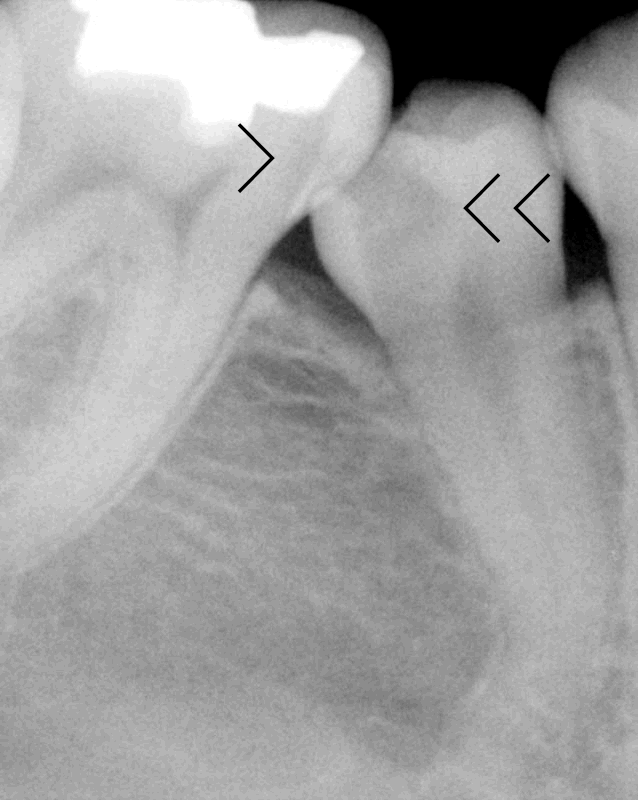 |
|
|
Fig.1 |
Fig.2 |
Dental Education Lecture: Curved Root
 |
|
|
Fig.1 |
Fig.2 |
Our teeth (i.e., its roots) have tendency to grow long. When the teeth do not come out completely, their roots keep growing. Sometimes the growing roots meet resistance and they change growing direction. So form curved roots.
The teeth that do not come out completely (so called impacted) are usually difficult to keep clean and tend to have cavities and/or gum diseases. Double arrows in Fig.1 points to a cavity of an impacted tooth, whereas the single arrow directs to the neighboring tooth with a cavity. This impacted tooth with a cavity needs to be extracted. Since the surgeon notices the curved root beforehand from X-ray (Fig.1), it is taken out without break (Fig.2). If he does not see the curved root in advance, the root tip may break during extraction. Retrieving the tip may prove difficulty (Fig.4 of Lecture Why Should We Remove Wisdom teeth Early?).
The best solution is to seek early dental consultation for the impacted teeth and take them out before their roots become long and curvy.
Xin Wei, DDS, PhD, MS 1st edition 07/04/2009, last revision 07/19/2009